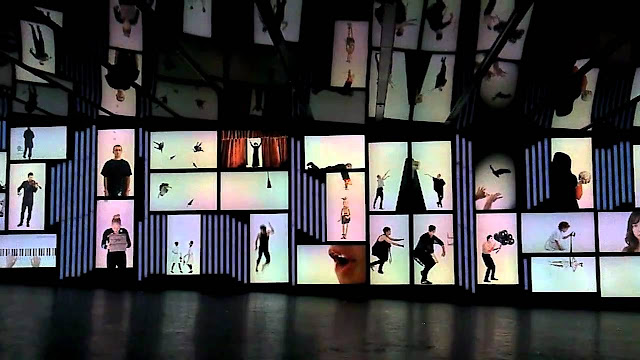The Genesis of Video Art
The term "video art" was coined within the bustling art markets of New York but found its roots in the visionary experiments of pioneers like Nam June Paik, the Vasulkas, and Godfrey Reggio. Nam June Paik's exhibition in 1968, titled "Electronic Art," marked a seminal moment in the use of video technology as an artistic medium, distinct from television or film, emphasizing an innovative, experiential form of art.
Wolf Vostell's creations in the late 1950s and early 1960s, such as "Das schwarze Zimmer" and "6 TV Dé-coll/age," incorporated televisions into installations, setting the stage for video art by using the TV not just as a medium of broadcast but as an integral part of the artistic expression. These early works challenged the viewers' understanding of art and its interaction with the technology of the day.
A New Era of Technological Artistry
Today, video art thrives through advancements in technology, utilizing an array of digital tools—from high-definition video to interactive installations that include plasma screens, LCDs, and even augmented reality. These technological enhancements have not only increased the quality and accessibility of video art but have also expanded the creative horizons for artists, allowing them to manipulate time, space, and perception in unprecedented ways.
Changing How We Consume Art
Video art introduces a new paradigm for art consumption. It is an active, engaging experience. Unlike traditional passive art forms, video art often requires interaction or participation from the audience, changing the viewer's role from a passive observer to an active participant. This shift is evident in works like Myron Krueger’s "Videoplace" and Dan Graham’s closed-circuit video installations, which engage directly with the audience, reflecting and sometimes altering their perceptions in real time.
Nam June Paik's "TV Buddha" brilliantly encapsulates this interaction, placing a live Buddha statue in front of a television broadcasting its own image, creating a loop of self-reference that questions the viewer's relationship with the medium and the message.
The Social and Cultural Impact
The intersection of video and societal shifts has provided a fertile ground for video art to act as a medium of social commentary and critique. The medium's ability to manipulate and restructure real-time images makes it a powerful tool for challenging and commenting on contemporary issues. Video art has often ventured into domains traditionally occupied by mass media, using similar technologies but applying them with a critical, often subversive edge.
Festivals and Global Recognition
As video art has grown in prominence, numerous festivals and exhibitions around the world have emerged as significant platforms for showcasing this form of art. These include the Electronic Arts Festival in Camerino, the Invideo festival in Milan, and the Videoart Festival in Rome, among others. These events celebrate the diversity and creativity of video art, highlighting its evolution from a niche art form to a significant cultural force.
Leading Figures and Legacy
Video art has been shaped by numerous influential artists. Nam June Paik, Bruce Nauman, Laurie Anderson, and Bill Viola are just a few of the visionaries who have used video to explore new artistic landscapes. Their contributions have paved the way for contemporary artists, who continue to explore and expand the boundaries of what video art can represent.
Looking Forward
As technology continues to evolve, so too does video art, adapting new tools and platforms to further explore the intersection of art, technology, and human experience. Whether through virtual reality, interactive installations, or social media, video art remains at the forefront of the digital art scene, continuously challenging our perceptions and expectations of what art can be.
In sum, video art is not just a form of artistic expression but a transformative experience that redefines the traditional boundaries between the artist, the artwork, and the audience. Its legacy is defined by its adaptability and its capacity to merge the artistic with the technological, creating a perpetually evolving canvas that mirrors the complex, dynamic world in which we live.




.jpg)







Nice… I wonder if this art will help the world
ReplyDelete